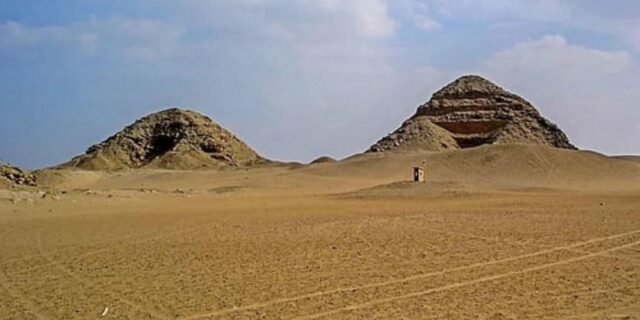In the southern part of Egypt, approximately 15 kilometers south of Giza, lies the necropolis of Abusir, known for its magnificent pyramids, temples, and tombs from the era of the Old Kingdom. This place became the final resting place for the pharaohs of the Fifth Dynasty, including Neferefre, Nyuserre Ini, and Sahure.
Abusir is part of the famous «Pyramid Fields» — ancient Egyptian burial complexes located on the plateau of the Western Desert south of the ancient capital of Memphis in Lower Egypt, along with Saqqara, Giza, and Dahshur.
The necropolis of Abusir was discovered in 1902 by the renowned Egyptologist and researcher Ahmed Bey Kamal, but it wasn’t fully excavated until the 1970s by a Czech archaeological expedition led by Miroslav Verner.
The excavations lasted for many years and revealed significant buildings and artifacts that helped decipher the life and culture of ancient Egypt. Since then, Abusir is considered one of the most important archaeological sites in Egypt.
A distinctive feature of the Abusir necropolis is the scattered pyramids across the area, serving as tombs for the pharaohs of the Fifth Dynasty and being the first pyramids built from limestone instead of mudbrick.
One of the most remarkable pyramids in Abusir is the Pyramid of Sahure, dedicated to Pharaoh Sahure, who ruled Egypt for approximately 13 years in the early 25th century BC. Its sides are approximately 79 meters in length and a height of about 47 meters.
This pyramid impresses with complex reliefs and hieroglyphics depicting the life and reign of Pharaoh Sahure. It contains about 370 meters of intricate reliefs, surpassing even the Great Pyramid of Khufu.
Another significant pyramid in Abusir is the Pyramid of Neferirkare Kakai, built for Pharaoh Neferirkare, who ruled Egypt in the early mid-25th century BC. This structure has a non-standard form of a stepped pyramid with multiple levels, gradually decreasing in size.
Despite the rush and the use of cheaper materials in the final stages of construction, the Pyramid of Neferirkare Kakai remains an important architectural monument of ancient Egypt.





